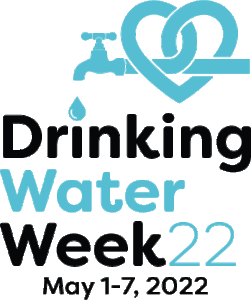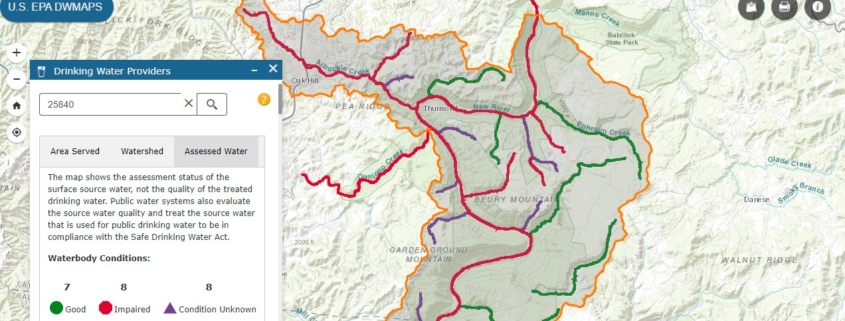Drinking Water: There When You Need It
by Jenna Dodson, Staff Scientist
When the majority of us in the United States want water, all we have to do is turn on a faucet. Our daily lives rely heavily on the assumption of reliable tap water. Take a typical morning routine, for example. Before leaving our houses in the morning, we probably turn on the faucet at least five times: to shower, brush our teeth, water for coffee, water for breakfast, and water to wash our breakfast dishes. Each time we turn on the faucet, we are expecting the water to be there right when we need it, and most of the time, it is.
For being so dependent on tap water for our daily needs, it is ironic that most people do not know where their water comes from. Let alone how much time and effort goes into maintaining the infrastructure necessary to transport the water from its source to our taps. There is no denying that our water infrastructure and drinking water regulations need updating. However, that does not detract from many people’s reality that quality tap water is there when they need it.
“There when you need it,” was the theme of Drinking Water Week 2022, an annual observance the first week of May sponsored by the American Water Works Association.
While Drinking Water Week might be over, I invite you to recognize the vital the behind the scenes work that goes into making sure that when you turn on your tap clean water flows out.
Kids in Marlinton learn about drinking water during a tour of the municipal water plant.
Two lines from the proclamations are particularly notable. The first of which is, “Whereas, any measure of a successful society – low mortality rates, economic growth and diversity, productivity, and public safety – are in some way related to access to safe water.” Access to safe water is a pillar on which healthy societies are built, and should be celebrated. Conversely, it is important to recognize that safe water is not a given in some communities, and more work is needed to ensure all communities have access to safe water.
The second notable line in the proclamation is, “Whereas, each citizen of our city is called upon to help protect our sources waters from pollution, to practice water conservation, and to get involved in local water issues by getting to know their water.” Safe drinking water is truly a collective responsibility. It takes water utilities and the community at large, working together, to protect source water and ensure clean, reliable drinking water.
From the infrastructure that is required to carry it to and from your home, to the critical work that water professionals put in around the clock to ensure the delivery of clean water to your tap, these efforts are often over looked.
One West Virginia Public Works Director said, “We are the forgotten souls.” And that sentiment certainly rings true. Too often, we take for granted the work of the behind-the-scenes water professionals. More typically, we only hear about water utilities when something goes wrong. Drinking Water Week provides an opportunity for us to “flip the script,” and celebrate the work of water professionals and their contribution to our communities.
This year, in recognition of Drinking Water Week, Harpers Ferry, Marlinton, and Romney issued mayoral proclamations. These proclamations recognize the importance of safe water for public health and societal prosperity, as well as the importance of citizens’ involvement in source water protection and local water issues.
An image from the EPA source water mapping tool.
We encourage you to get involved! If you do not know the source of your public drinking water, you can check out the Environmental Protection Agency’s Drinking Water Mapping Application to Protect Source Waters. If you are interested in your community’s source water protection efforts, we encourage you to get involved.
Lastly, we invite you to join WV Rivers, Harpers Ferry, Marlinton, and Romney in reflecting on the vital role drinking water plays in our lives and communities.







